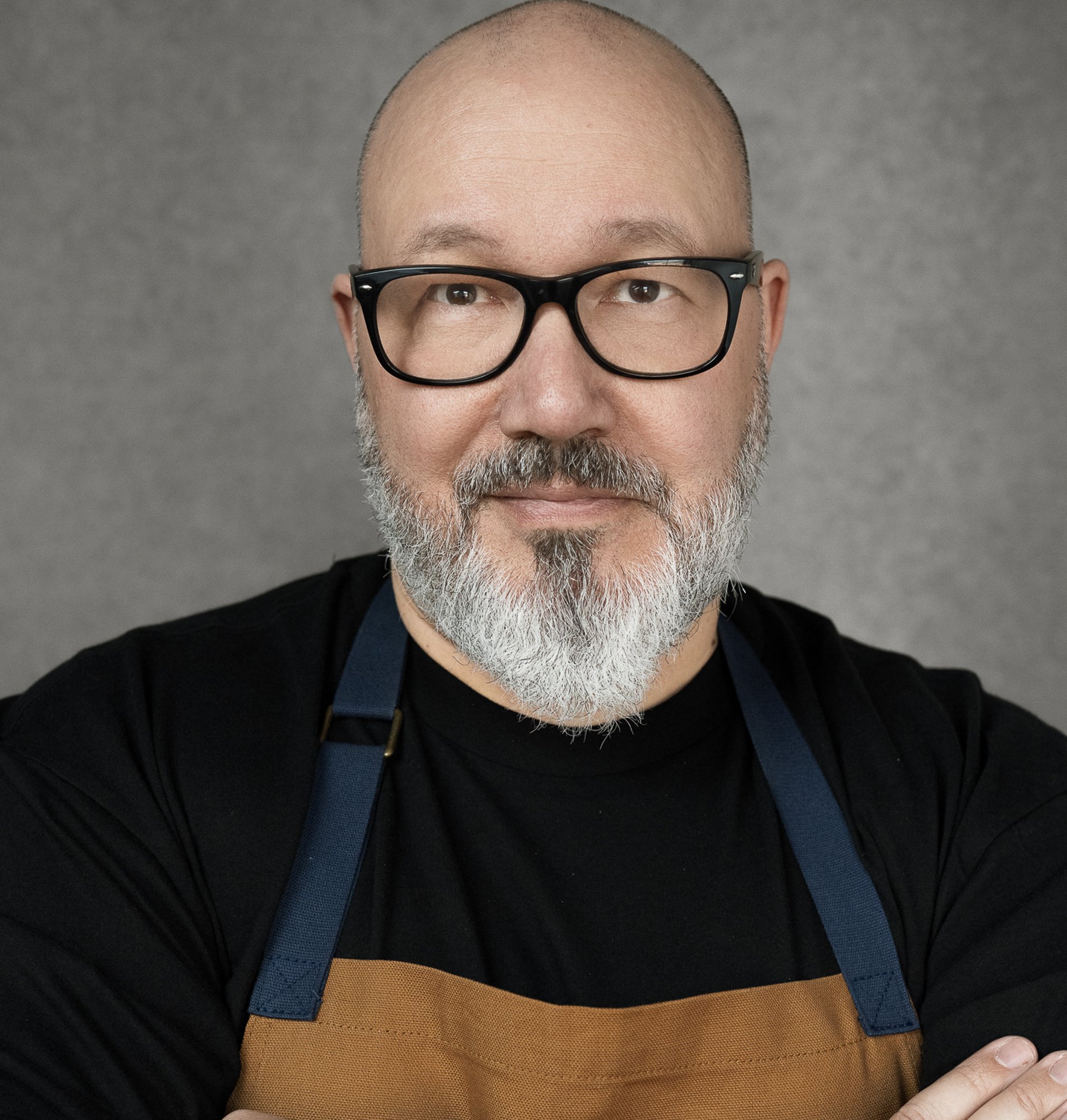“Without Gyo, There is No Gyotaku”: Nate Garrett’s Maine-Japan Story Through the Art of Fish Printing
You can always hear the low hum of Nate Garrett’s three freezers in his garage—not for food, but for fish waiting to be transformed into art. This is where Nate, as an artist, practices the traditional Japanese art of gyotaku (fish printing) in his home state of Maine, capturing the shape, texture, and spirit of marine life with ink and paper.
Nate Garrett
But Nate’s story didn’t start with art—it begins with a childhood dream of becoming a marine biologist. “I wanted to swim with sharks or be in nature documentaries,” he laughed. Raised between rural Maine and New Hampshire, Nate grew up surrounded by water, fishing lines, and the desire to understand aquatic life. Though his career path eventually took a detour into IT and software development, his weekends were spent casting lines all across the East Coast, from freshwater brooks to saltwater excursions. The turning point came thanks to his two sisters—one who lived for a time in Hawaii, the other in Japan. They knew his love for fishing and suggested he look into gyotaku. That conversation lit the spark. “The moment I saw my first gyotaku, I fell in love with it,” Nate recalled.
From there, Nate’s journey was self-taught, persistent, and deeply respectful. He reached out to gyotaku masters like Mineo Yamamoto and studied books; many of them entirely in Japanese, with page by page Google translations. What started as curiosity eventually became an obsession. He joined the Nature Printing Society, refined his technique, and immersed himself in the craft full-time, eventually gaining national and international recognition.
Acadian Redfish
In 2023, Nate appeared on TV Tokyo’s Sekai ga Odoroita Nippon! Sugoidesune!! Shisatsudan, introducing Japanese audiences to his personal journey and style of gyotaku. That episode opened unexpected doors in Nate’s journey as a gyotaku artist, eventually leading to an invitation from the Consulate General of Japan in Boston, where he was honored to present a print for display at the official residence of the Consul General in August 2025.
Yet, what makes Nate’s story truly compelling isn’t just his technique—it is his philosophy. “As a gyotaku artist, I have more in common with the men and women of Maine’s working waterfront than with other artists,” he said. “Gyotaku requires a real fish. Without gyo (fish), there is no taku (Printing/Impression). Without fish, there is no fishing industry, no seafood restaurants, no maritime communities. This art form is uniquely positioned to tell stories that connect our economy, environment, and culture.”
Smallmouth Bass
Today, Nate sources his fish from Maine’s commercial fishermen, seafood companies, chefs, recreational anglers, and beyond. Some arrive frozen from across the country, others are caught locally. Each fish tells a story: not just of the ocean, but of the people whose lives are tied to it.
Though grounded in tradition, Nate is also an innovator. He experiments with classic gyotaku techniques by transferring prints onto pottery using a clay slip. Still, he remains guided by the ethos of masters like Yamamoto: print the fish as it is, detail the eye only, and let the rest speak for itself.
From Japan to Maine, from ocean to print, Nate Garrett’s art captures more than fish—it captures life, heritage, connections, and much more.
Find out more about Nate’s story and his art at:
https://www.bigfishgyotaku.com
https://www.instagram.com/bigfishgyotaku
🌊 Subscribe for more Maine–Japan stories that celebrate culture, community, and creativity across the sea!
📩 Want to share your story? Email us at jcaofmaine@gmail.com.
📷 Follow us on Instagram: https://www.instagram.com/maine_japan/






